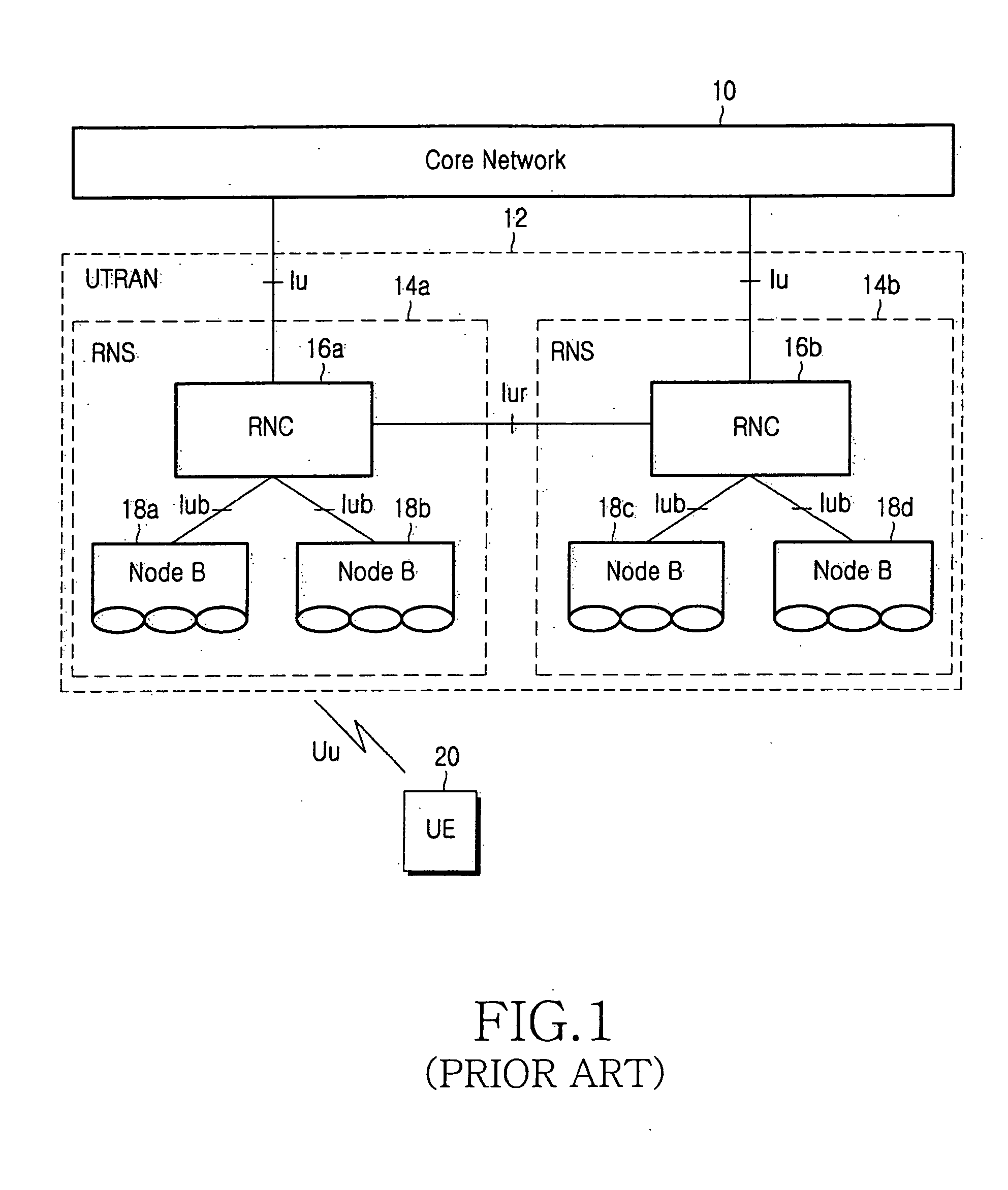Method and apparatus for selecting serving scheduling cell for soft handover user equipment in an uplink packet transmission system
a user equipment and transmission system technology, applied in the field of wideband code division multiple access (wcdma) communication, can solve the problem that the bs may have difficulty in determining the tf for transmission of the e-dch
- Summary
- Abstract
- Description
- Claims
- Application Information
AI Technical Summary
Benefits of technology
Problems solved by technology
Method used
Image
Examples
second embodiment
[0109] In a second embodiment, a UE transmits a serving scheduling cell ID or a serving scheduling Node B ID using an E-DPCCH. The E-DPCCH is an uplink channel transmitting control information for an E-DCH, and information carried on the E-DPCCH, which includes HARQ information and a transport block size (TBS).
[0110] With reference to FIG. 15, a description will now be made of a UE apparatus for transmitting a serving scheduling cell's ID or a serving scheduling Node B's ID determined in the UE to Node Bs using an E-DPCCH.
[0111] Referring to FIG. 15, a serving scheduling cell / Node B ID selector 1501 selects a serving scheduling cell ID or a serving scheduling Node B ID, and the cell ID / Node B ID is channel-coded in a channel coder 1502 to provide noise robustness in a channel. The coded signal is multiplexed with HARQ-related information 1503, TBS information 1504 and other control information 1505 in a multiplexer 1506, which generates E-DPCCH data 1507. The E-DPCCH data 1507 is m...
third embodiment
[0112] In a third embodiment, a UE comprises a serving scheduling cell ID or a serving scheduling Node B ID in a MAC-e protocol data unit (PDU) of an E-DCH before transmission. A data format of the E-DCH is illustrated in FIG. 16.
[0113] Referring to FIG. 16, a MAC-e service data unit (SDU) 1602, which is a user data part, is added to a MAC-e header 1601 including HARQ or scheduling-related information, thereby generating a MAC-e PDU 1604. That is, the MAC-e header 1601 should be construed herein as a part comprising all the remaining information except the user data, rather than information located at the head of the MAC-e PDU 1604. The MAC-e PDU 1604 is added to cyclic redundancy check (CRC) 1603, thereby generating a code block(s) 1605 used in a physical layer. A UE comprises the serving scheduling cell ID or the serving scheduling Node B ID in the MAC-e header 1601 before transmission, and a Node B can determine whether it includes a serving scheduling cell or becomes a serving s...
first embodiment
[0118] In a first embodiment, a non-serving scheduling Node B performs scheduling using a 1-bit signal capable of representing two types of information. More specifically, the non-serving scheduling Node B transmits a 1-bit scheduling grant capable of representing Don't Care information and Down information to UEs located in a soft handover region.
[0119] If the scheduling grant received from the non-serving scheduling Node B represents the Don't Care information, the UE determines a data rate of an E-DCH using only the scheduling assignment information from the serving scheduling Node B. However, if the scheduling grant received from the non-serving scheduling Node B represents the Down information, the UE decreases a rate of the E-DCH by one step, disregarding the scheduling assignment information from the serving scheduling Node B.
[0120] The scheduling grant is transmitted using one bit, and the information having the highest occurrence probability is subjected to discontinuous t...
PUM
 Login to View More
Login to View More Abstract
Description
Claims
Application Information
 Login to View More
Login to View More - R&D
- Intellectual Property
- Life Sciences
- Materials
- Tech Scout
- Unparalleled Data Quality
- Higher Quality Content
- 60% Fewer Hallucinations
Browse by: Latest US Patents, China's latest patents, Technical Efficacy Thesaurus, Application Domain, Technology Topic, Popular Technical Reports.
© 2025 PatSnap. All rights reserved.Legal|Privacy policy|Modern Slavery Act Transparency Statement|Sitemap|About US| Contact US: help@patsnap.com



